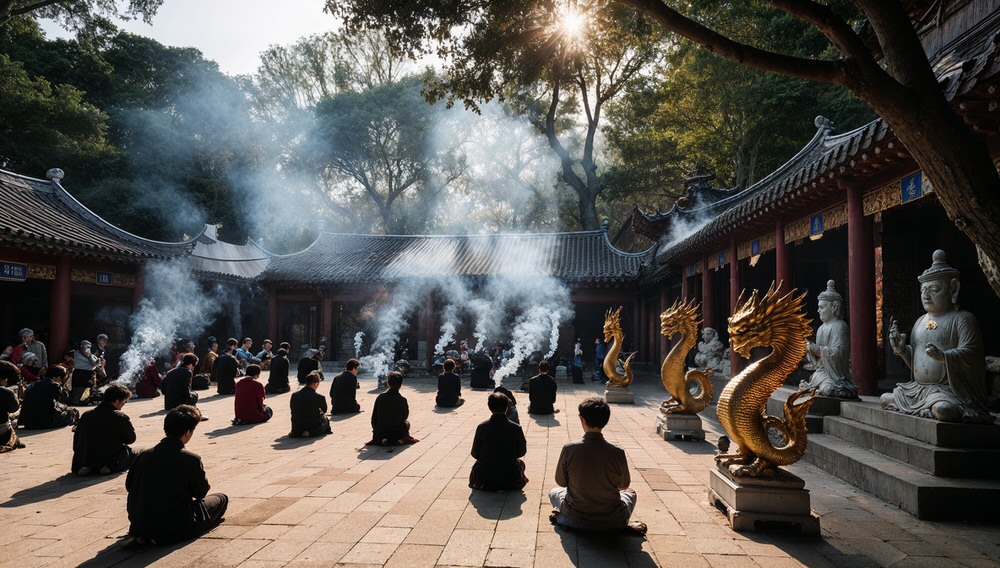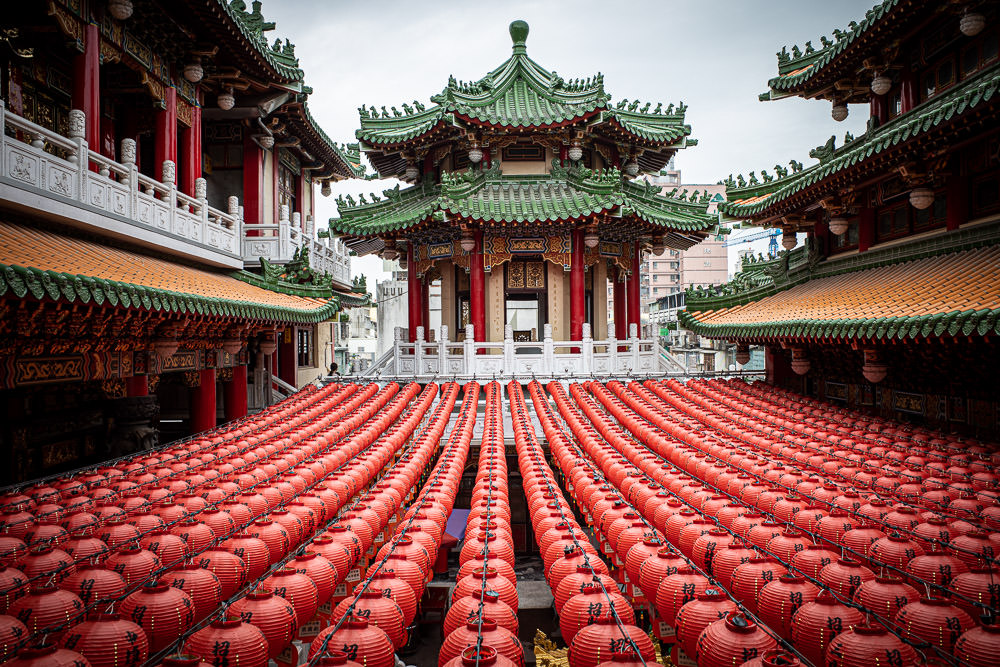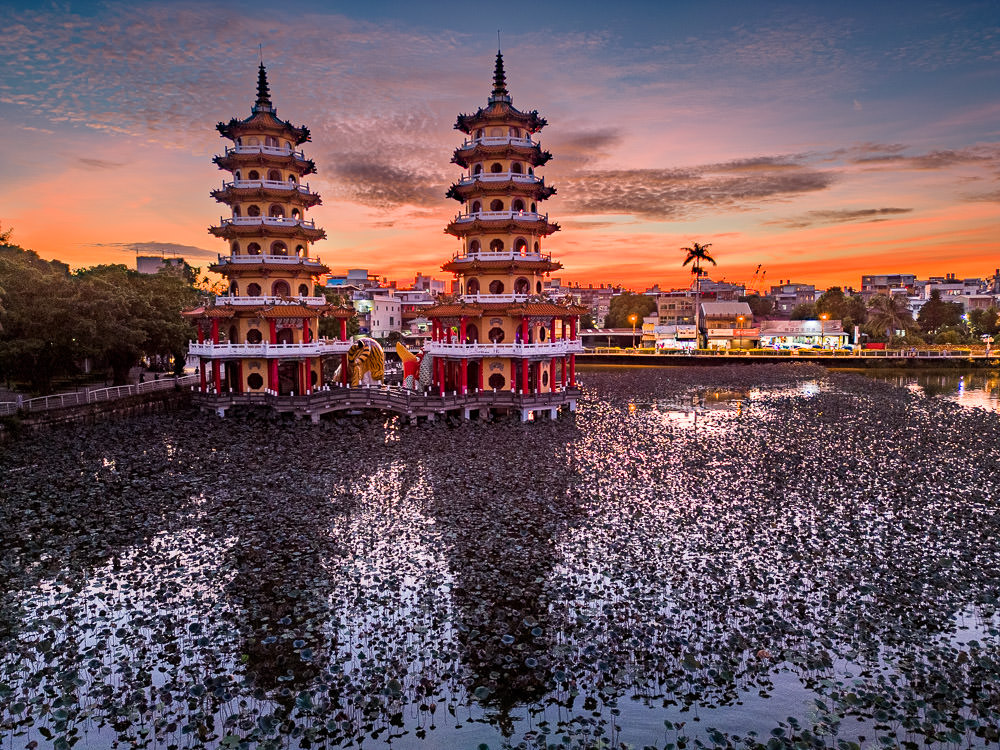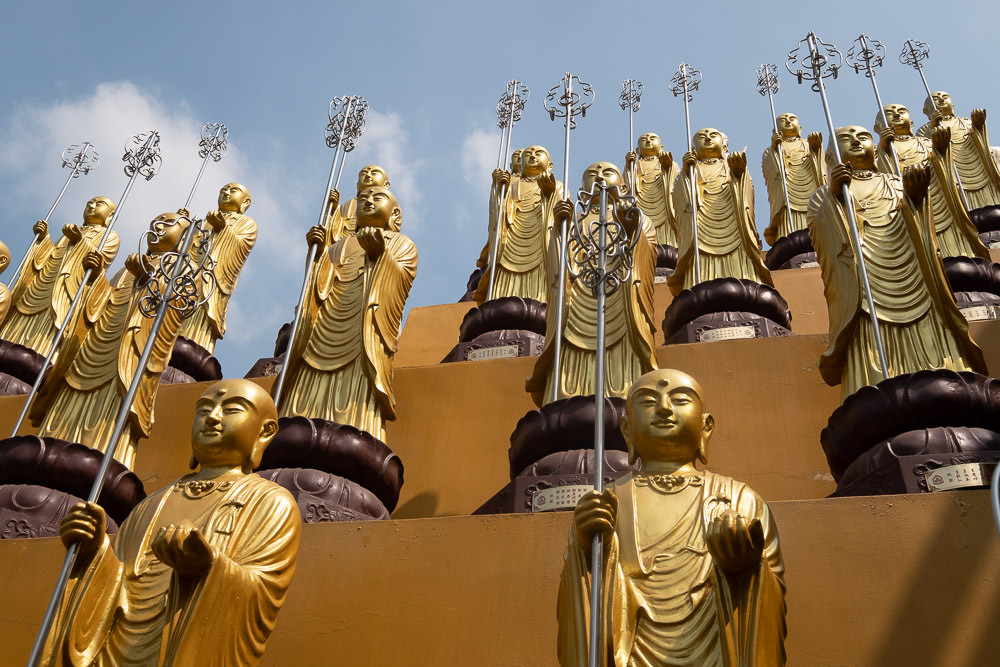Taiwan’s temples are more than just architectural marvels—they are living, breathing symbols of the island’s vibrant culture, history, and spirituality. From the intricate carvings of dragons and gods to the fragrant wafts of incense, temples in Taiwan are integral to daily life, and they tell a story of resilience, devotion, and community. Whether you’re visiting as a curious traveller or a resident looking to deepen your understanding, exploring Taiwan’s temple traditions and rituals can offer profound insights into the island’s spiritual heart.
The Significance of Temples in Taiwanese Life
Temples in Taiwan aren’t just places of worship but community hubs. They serve as the centre of local life, where people come together to pray, celebrate, reflect, and connect. Temples often reflect a blend of Daoist, Buddhist, and folk religious practices, making them a colourful mix of rituals, deities, and symbols.
A visit to a temple in Taiwan isn’t just about spirituality—it’s about experiencing the island’s rich cultural tapestry. Whether you observe the daily rituals or take part in the grand festivals, the temples are alive with energy and devotion. For many Taiwanese, temples offer a connection to their ancestors, their community, and the greater cosmos.

Daily Rituals: Worship in Motion
If you ever wander into a Taiwanese temple, you’ll first notice the constant flow of people moving in and out. Some are there for a brief moment of prayer before work, while others spend longer, offering fruits and lighting incense sticks. These acts may seem simple, but they carry profound meaning. Offering incense is believed to be a way of connecting with the divine, carrying one’s prayers up to the heavens.
Visitors can usually see temple-goers performing “bai bai,” a familiar ritual where people bow, usually three times, while holding burning incense. The number of bows is significant, often performed in odd numbers—especially three, seven, or nine—each symbolising different aspects of life, like prosperity, good fortune, or health.
One thing that fascinates me every time is the ritual of “divination blocks” or “po̍ah-puē.” Worshippers toss two crescent-shaped wooden blocks onto the ground to seek answers from the gods. The way the blocks land determines whether the answer is yes, no, or a maybe. I’ve tried it myself a few times, and there’s something undeniably magical about feeling so connected to an ancient practice that’s still relevant today.

Temple Architecture: A Story in Stone and Wood
The architecture of Taiwanese temples is mesmerizing. No matter how many temples you visit, each one feels uniquely its own. The bright red pillars, golden roofs, and elaborate sculptures tell stories that stretch back centuries. Temples are often adorned with vibrant dragons, phoenixes, and other mythological creatures—each symbolizing power, protection, and spiritual energy.
One particularly impressive feature is the rooftop sculptures. These colorful and intricate pieces, made from broken ceramics, depict everything from legendary battles to religious deities. Each temple’s design tells a story, blending mythology, history, and religious belief into one cohesive visual feast.
But beyond their aesthetic beauty, the layout of the temple has spiritual significance. The central shrine is typically dedicated to the main deity, while side altars honor a host of secondary gods, ancestors, or local spirits. Walking through a temple often feels like stepping into a world where past, present, and divine forces coalesce.

Festivals and Major Celebrations
Temples in Taiwan really come to life during festivals. These celebrations are grand, loud, and often colorful affairs filled with parades, performances, and community feasts. The most significant festivals center around key gods or goddesses, with the birthday of Mazu, the goddess of the sea, being one of the largest celebrations. Her birthday typically falls around April and is marked with large processions, elaborate dragon dances, and offerings.
Another important festival is the Ghost Festival, held during the seventh lunar month. Temples become the focal point of this event as offerings are made to spirits, seeking their blessing or appeasement. Temple forecourts are often filled with altars covered in food, paper money, and other goods meant for wandering spirits.
These festivals are not just about religious rituals—they’re cultural spectacles that draw together entire communities. They offer a glimpse into Taiwan’s strong sense of tradition and its deep connection to the spiritual realm.

The Role of Deities in Everyday Life
Taiwanese temples are home to a vast array of deities, each with their specific domains and responsibilities. One of the most popular gods is Guan Yu, the god of war, who is often invoked for protection and strength. Mazu, as mentioned earlier, is another key figure, especially in coastal areas where she is venerated as the protector of fishermen and sailors.
One thing I’ve noticed while visiting temples across Taiwan is that the relationship between people and deities feels very personal. Many Taiwanese have a specific temple or deity they regularly visit to seek guidance, offer thanks, or ask for blessings related to health, wealth, or love. It’s common to see worshippers lighting incense and bowing to altars dedicated to the Earth God, who is often revered for his role in protecting homes and businesses.
What I find particularly interesting is the practice of “spirit mediums.” These individuals are believed to be able to communicate directly with deities and spirits. During major festivals or special ceremonies, you might witness these mediums entering trances, performing rituals, and providing guidance to followers—an extraordinary sight that’s deeply rooted in Taiwanese spiritual beliefs.

Participating in Temple Culture as a Visitor
If you’re visiting Taiwan, stepping into a temple is a must. But before you go, it’s helpful to know a few basics to ensure you respect the space and its traditions. For example, always enter the temple through the right-hand side door and exit through the left. The central door is reserved for the gods.
Another tip: bring a small offering. Even as a visitor, bringing fruit or lighting incense shows your respect. And don’t be afraid to participate in rituals like burning incense or bowing—locals are often very welcoming to foreigners who are respectful and curious about their traditions.
Temples are sacred spaces, but they are also inclusive ones. They invite people in, offering peace, reflection, and, if you’re lucky, a touch of spiritual wisdom.

Conclusion
Taiwan’s temples are more than just religious centers—they are living museums of history, art, and culture. Each temple is a window into the island’s soul, offering visitors a chance to understand the deep-rooted traditions and beliefs that shape daily life in Taiwan. Whether you’re wandering through a small neighborhood shrine or witnessing the grandeur of a major temple festival, the experience is both humbling and awe-inspiring.
The beauty of Taiwan’s temples isn’t just in their design, but in their function: they are places where people find comfort, guidance, and community. Next time you pass by one of these temples, take a moment to step inside. Who knows, you might just walk away with more than just a memory—you might leave with a piece of Taiwan’s spiritual essence, too.
